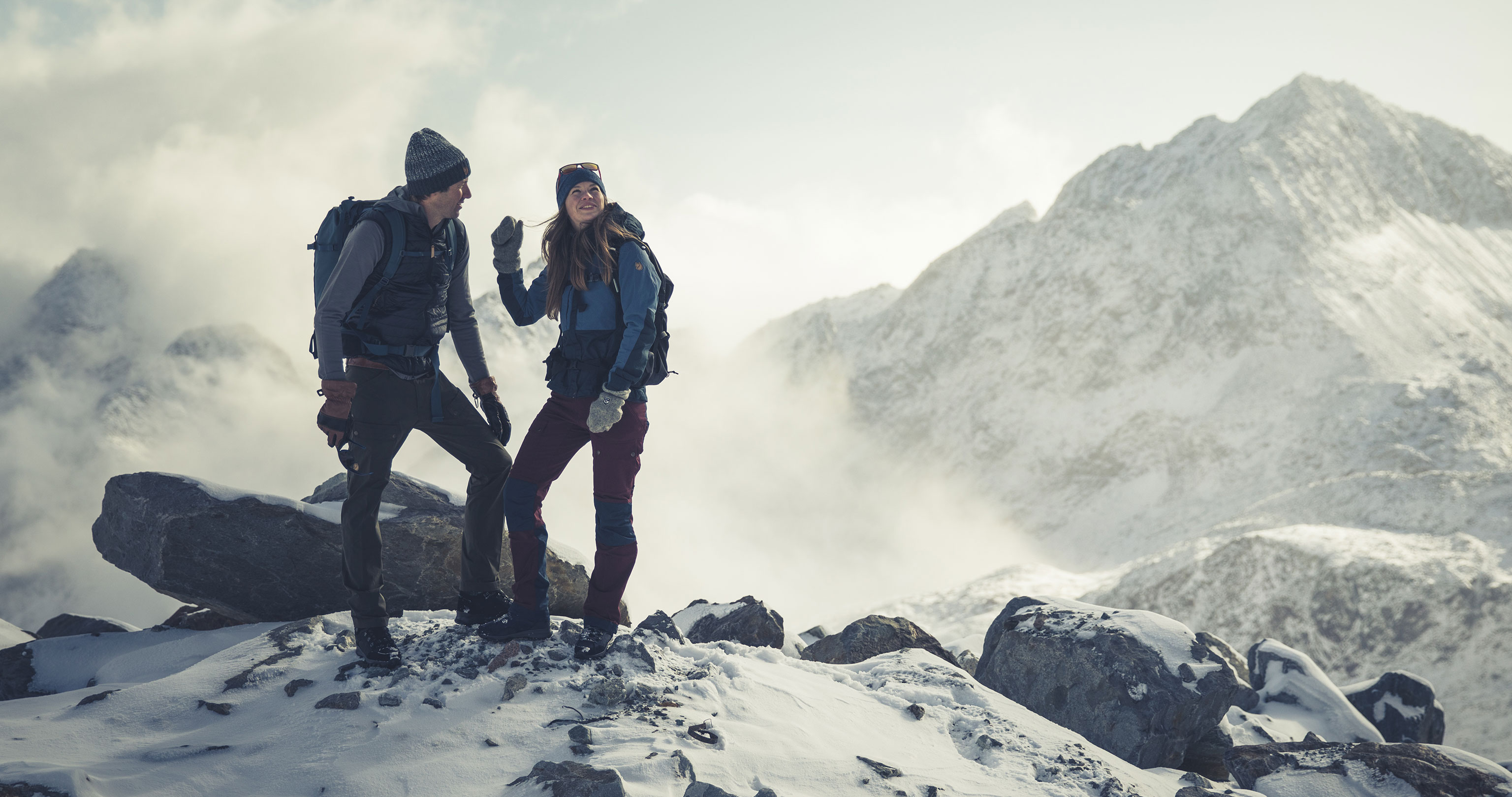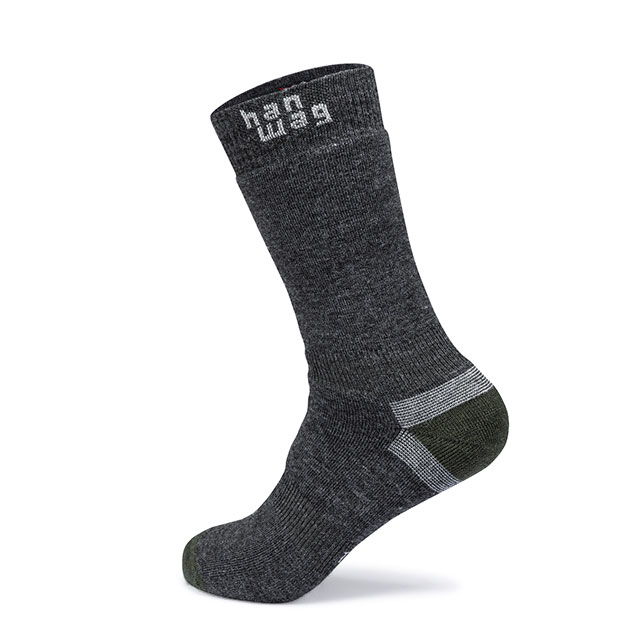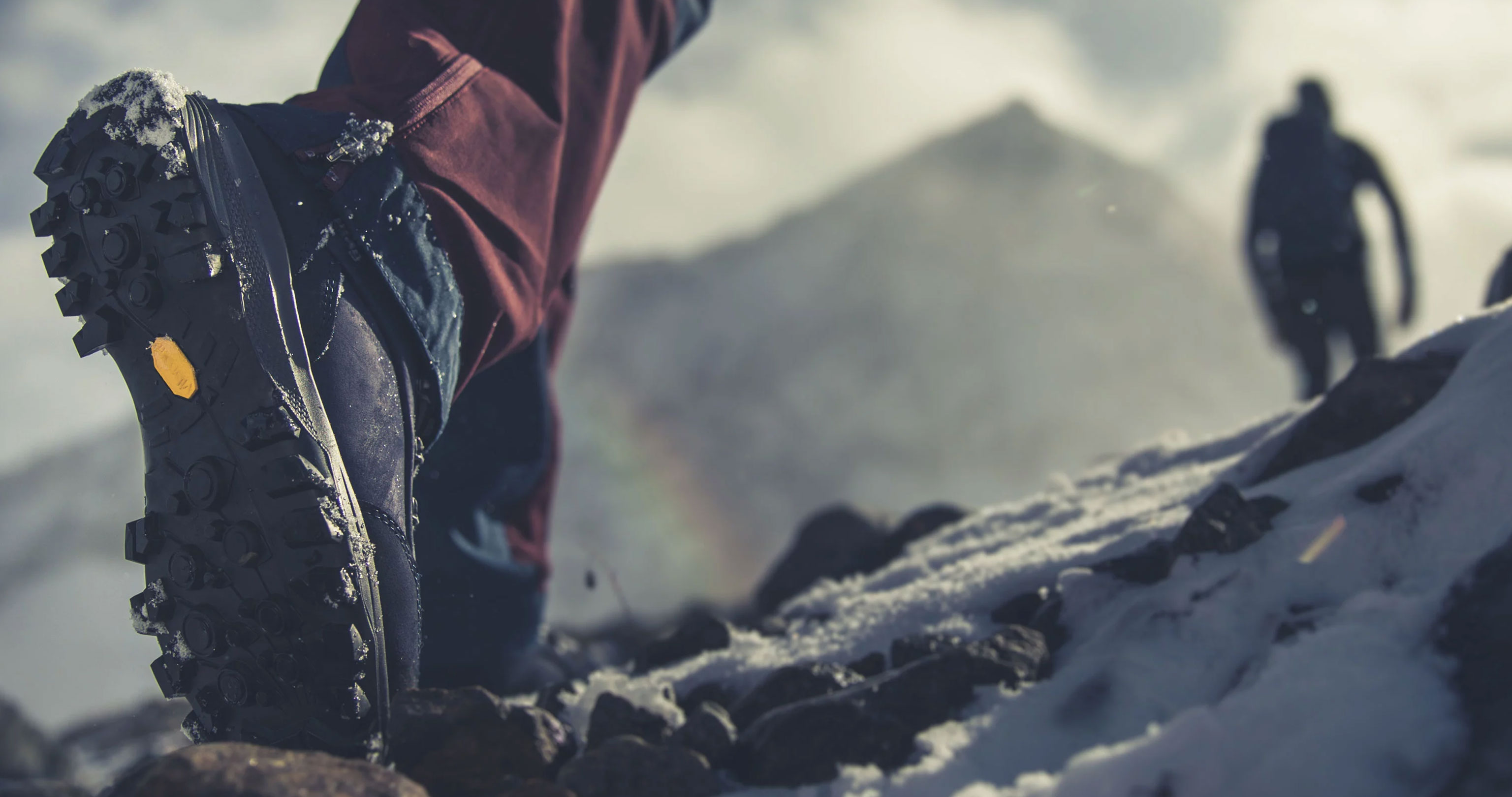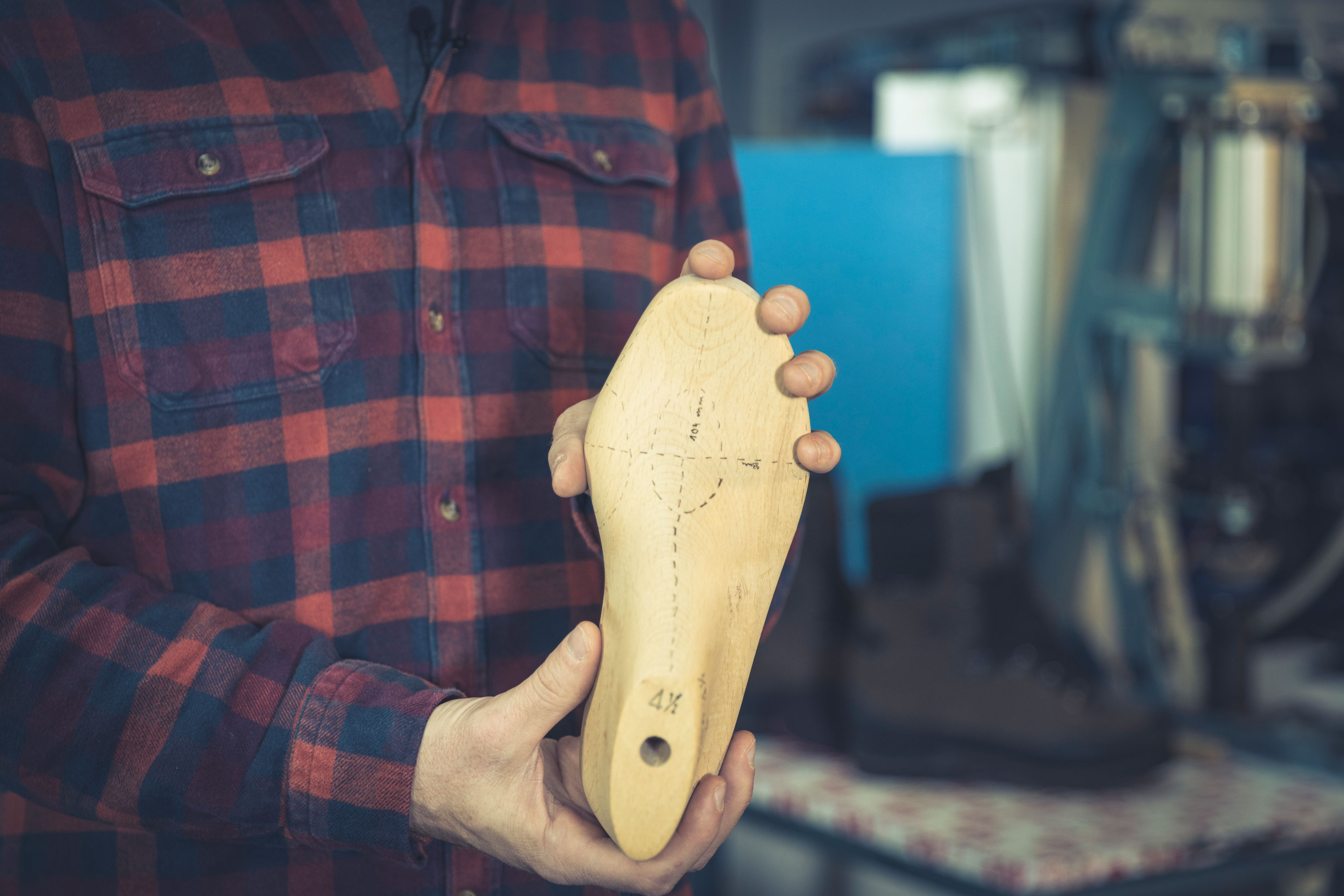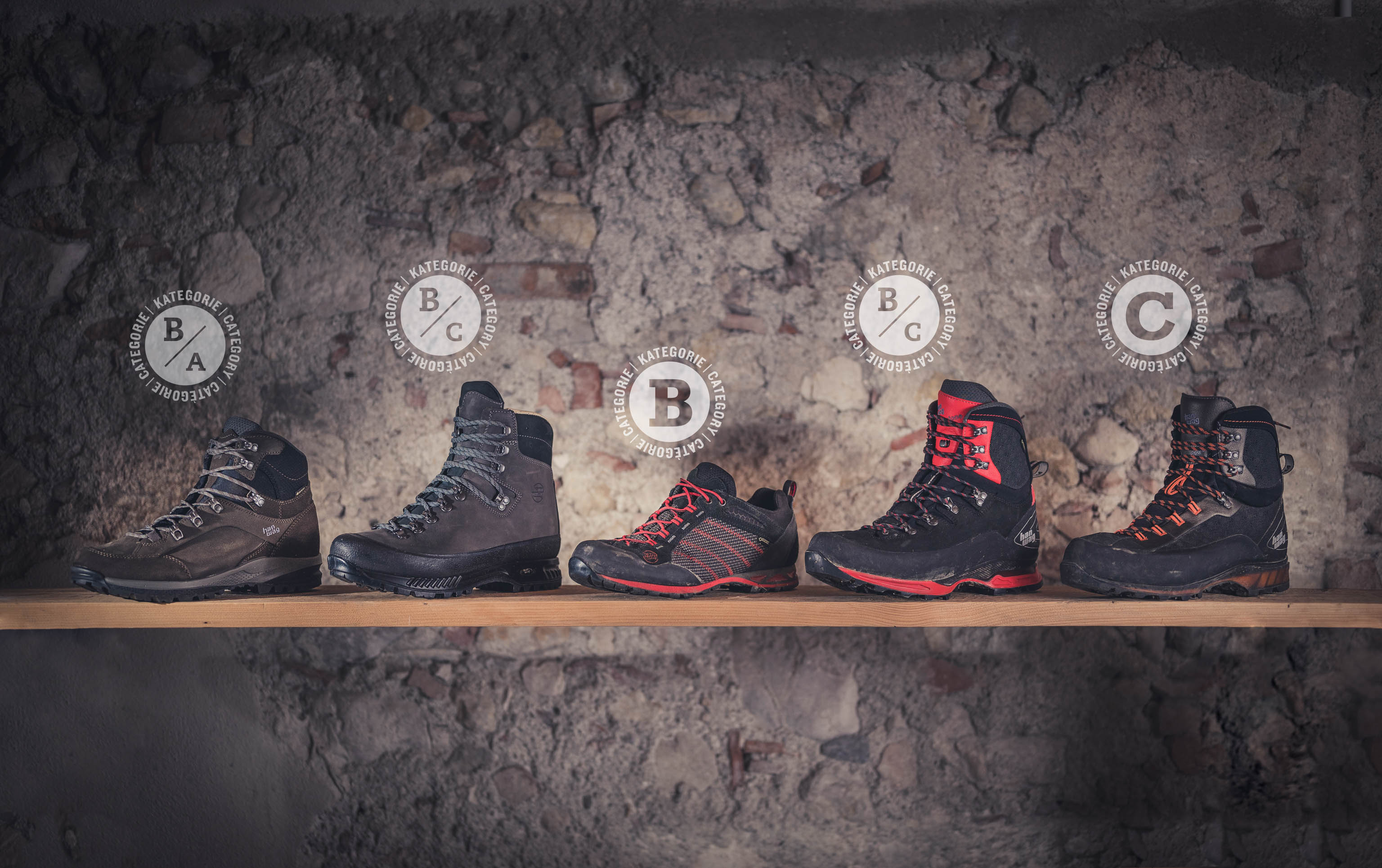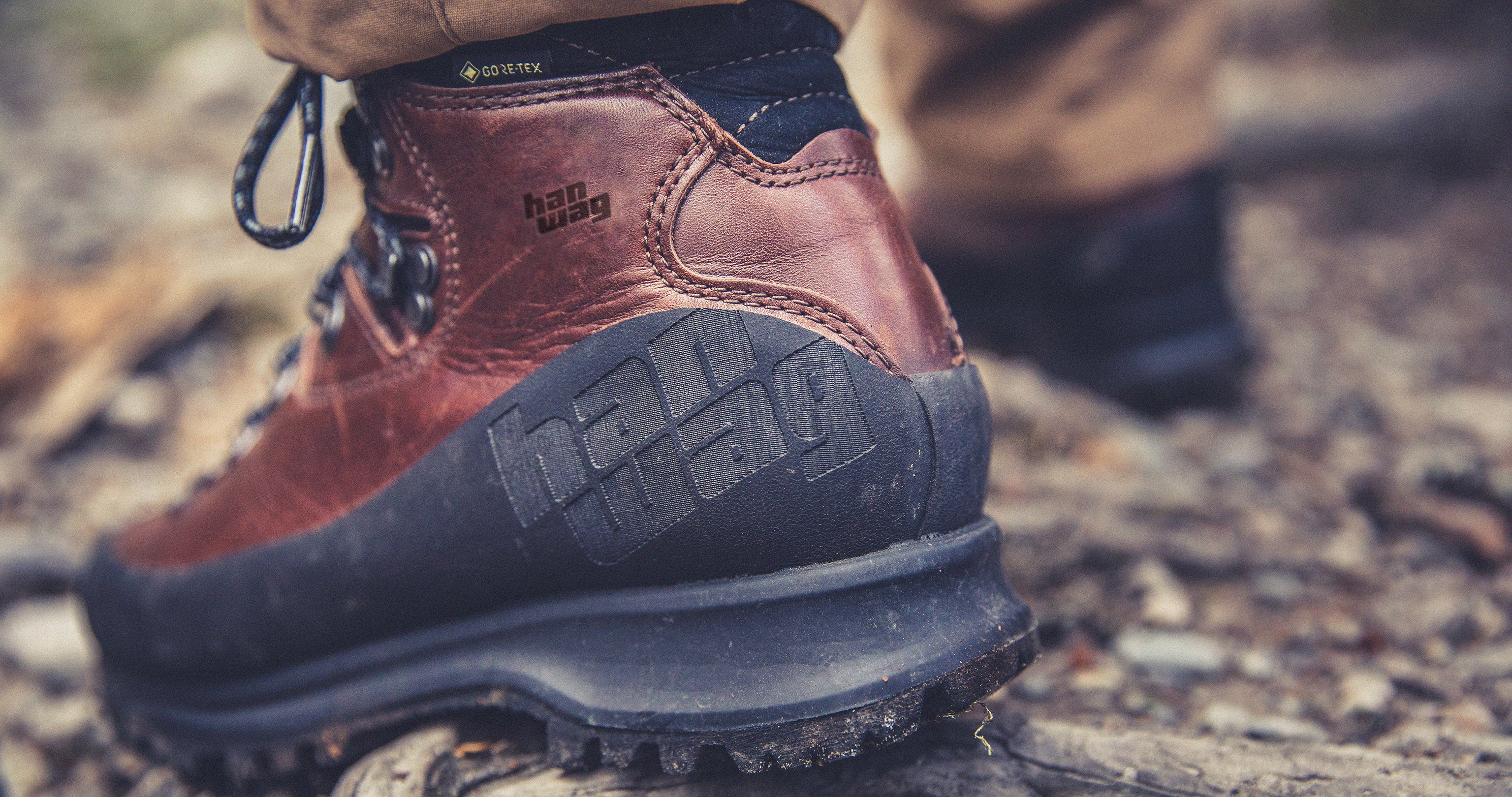Updated on
-
Sneak Peak – The 5 Key Tips
- Winter boots generally have a higher upper. It prevents snow from getting in and keeps your feet warm.
- Leather is the main upper material used. It gives good support and stability in snow and ice.
- Boots for cold feet often have a thicker, warmer lining material that provides greater insulation.
- Winter boots should be waterproof. With a Gore-Tex or EcoShell membrane.
- Winter boots require a grippy sole with a deep tread.
For more in-depth information, read the whole article.
- What is a winter boot?
- What types of winter boots are there?
- What do you look for in a winter boot?
- The right socks to prevent cold feet
- More gear for winter hiking
Winter hikes and snowshoe treks can be exhilarating. However, cold feet often ruin an otherwise enjoyable undertaking. Wet or numb toes can quickly make you feel fed up with winter. But it’s not a problem with the right winter-hiking gear. In addition to picking the right clothing, it’s primarily the right footwear that plays a role. And that’s where dedicated winter hiking boots and boots for cold feed come in.
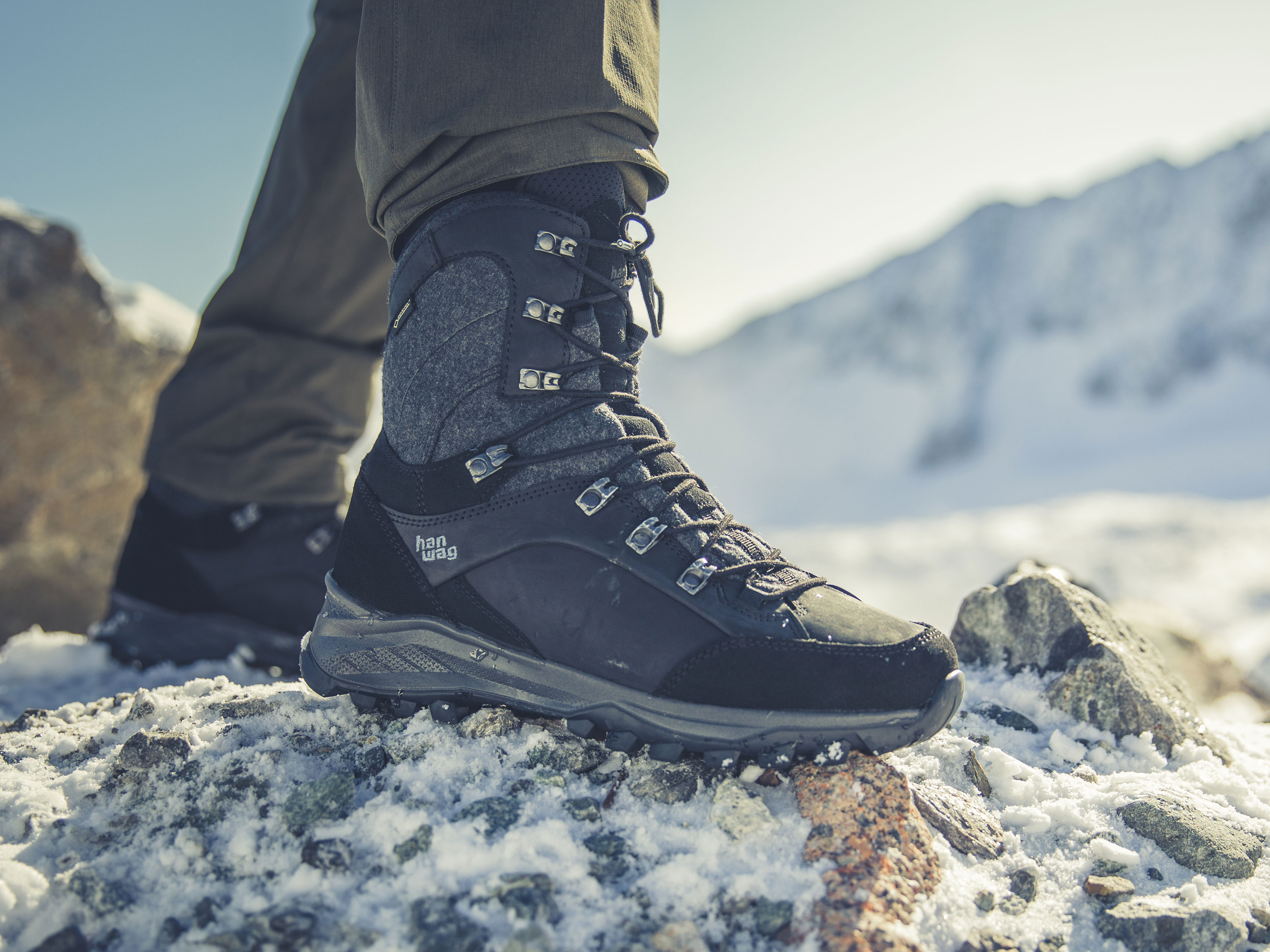
1. What is a winter boot?
“We’ve developed boots specifically for outdoor activities in winter. They stand apart for their high upper, insulation, and special non-slip soles,” explains Bettina Haag, R&D designer at HANWAG. Consequently, winter boots stop feet from getting cold and wet, and also provide plenty of grip when you hike through snow and ice.
Always stay up to date: Subscribe to the HANWAG newsletter and become part of our community.
2. What types of winter boots are there?
No winter boots are the same. Quite the contrary, in fact, there are lots of models for different uses here. The range covers walks on cleared paths, moderate winter hikes in the great outdoors to footwear for demanding winter treks with heavy backpacks in backcountry, off-trail terrain.
A special feature is the ability to combine the footwear with snowshoes. “Winter hiking boots for this purpose usually have a firm upper so that the snowshoe straps don’t press onto your feet,” explains Bettina. A special heel welt or dedicated snowshoe attachment point to stop the strap from slipping at the back is also helpful.
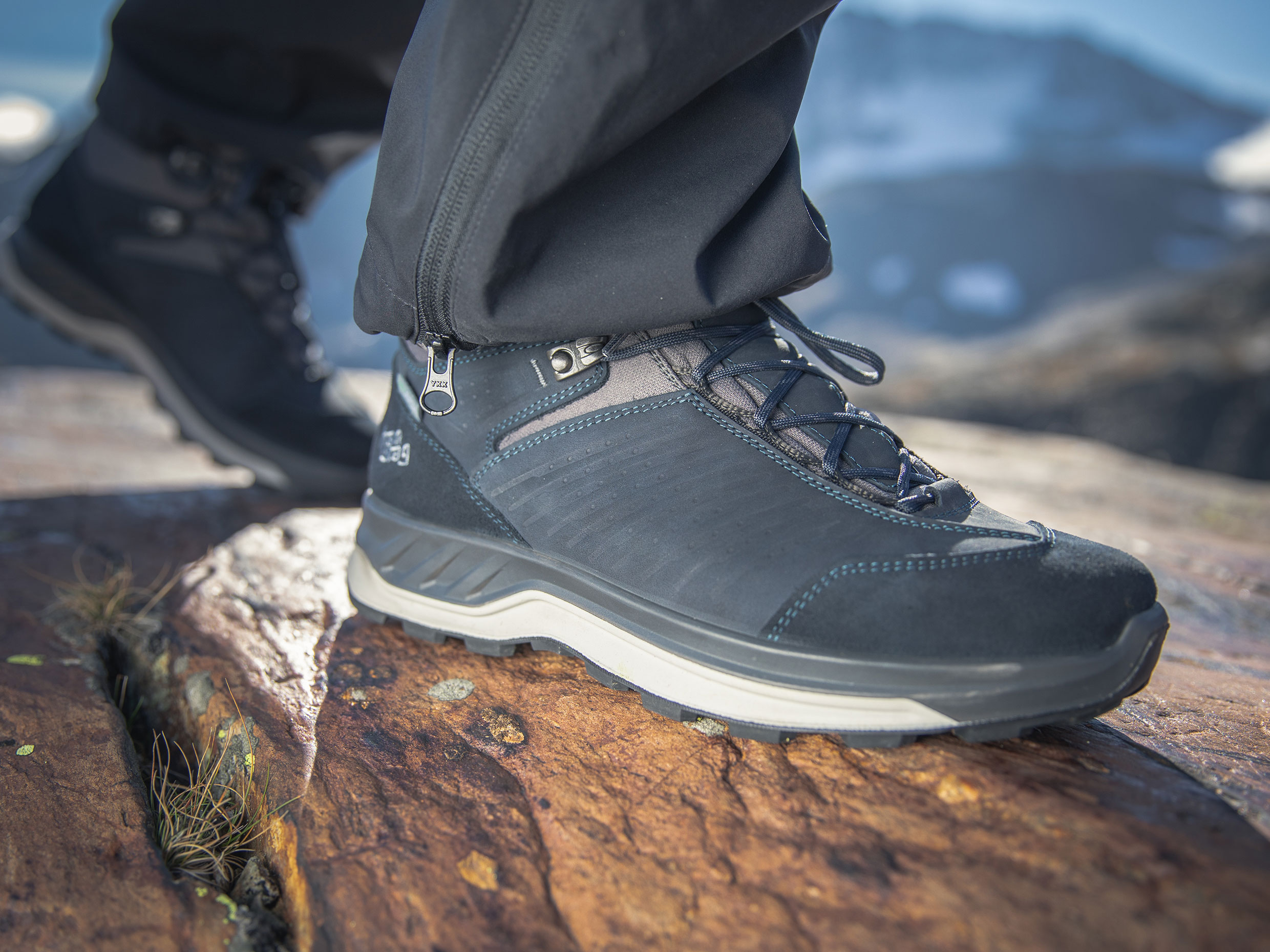
Your winter walking companion
Whether out walking the dog on a cold December morning, or hiking through a winter wonderland, the new HANWAG Bluestrait ES has many talents during the cold season. It comes with a warm lining, non-slip sole and is waterproof thanks to its sustainable EcoShell membrane.
3. What do you look for in a winter boot?
There are lots of things that make winter boots stand apart from standard hiking boots. Here are the four most important ones:
Design and upper on winter hiking boots
As we’ve already mentioned, winter boots usually have a high upper that extends way over the ankle. It keeps you warm and has two other key benefits:
- A high upper stops snow getting into the boot.
- And it gives the ankle more support. That’s vital so that you don’t twist it on rugged winter trails. What’s more, a sturdy boot makes it easier for you to step on the snow sideways and stabilise snowshoes.
Winter boots for extreme expeditions, and also some winter running shoes, have a tight-fitting gaiter at the upper end. This prevents snow from getting in, but some people find it gets in the way while they’re walking. An alternative is to keep a pair of gaiters in your backpack and put them on if needed.
The outer material is called the upper. Here, leather is often used with boots for hiking in winter. Because leather is very hardwearing. It can put up with sharp ice crystals and snowshoe straps rubbing on it . Which is why winter boots made of leather are the number one choice for demanding hikes and treks.
The slightly more lightweight winter boots for moderate outdoor use have inserts made of synthetic material in the upper alongside leather sections. These fabric-like materials are more lightweight, flexible, and very breathable. Hardwearing fibres like polyamide also stop the material from wearing thin or getting damaged.

"A winter boot must be waterproof. And it’s usually an in-built membrane that does that job."
Bettina Haag, R&D designer at HANWAGWhether it’s made of leather or synthetic materials, the upper on a winter boot has to be waterproof. And it’s usually an in-built membrane, like Gore-Tex or EcoShell that does the job. It’s not just waterproof, but also breathable. Sweat can therefore be wicked away. This prevents the inside of the boot from getting wet, which is particularly important in winter. In low temperatures, wet feet quickly turn into cold feet.
Winter boots need to be cared for and impregnated regularly to provide consistently reliable protection from getting wet.
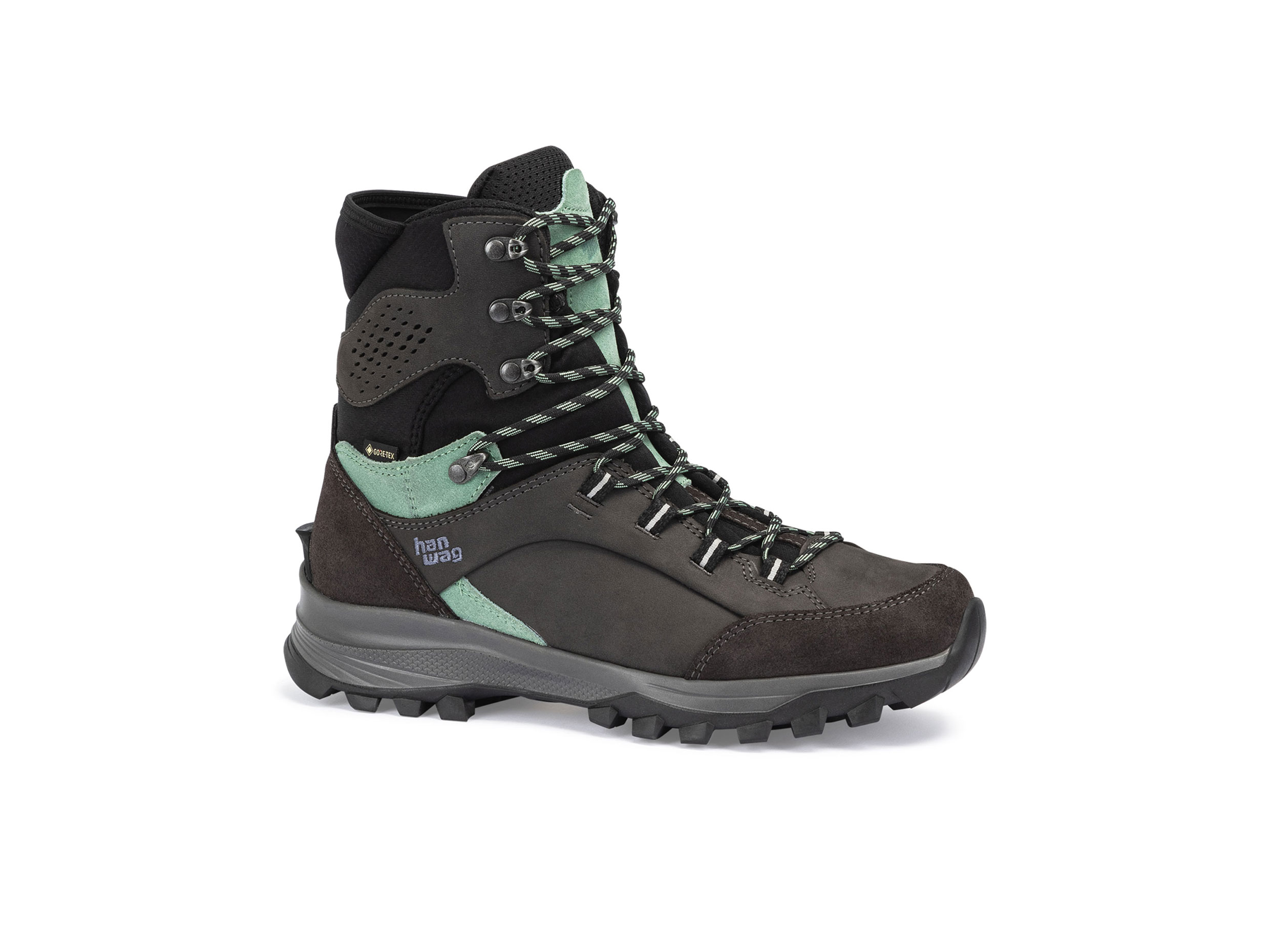
Our snowshoe boots
The HANWAG Banks Snow GTX (the photo shows the women’s version) is the winter all-rounder for all activities outdoors from November to April. They’re waterproof, provide excellent insulation from the cold, have an extra high upper to stop snow getting in and come with a snowshoe attachment point on the heel. The hardwearing material stops the snowshoe strap from pressing onto the foot.
Warm feet in winter thanks to insulation
There are lots of ways of keeping feet warm in winter boots:
- Lined winter boots are what lots of people tend to go for first. Actually, linings offer various options for keeping feet from feeling cold. Examples range from fluffy sheepskin to a thick lining with a waterproof membrane.
- Some winter boots have an insulating layer between the upper and lining to keep out the cold – like the G-Loft Fit insulating fleece in our HANWAG Abisko GTX expedition boot. These are the ultimate boots for cold feet.
- Insulating material can also be built in underfoot at the midsole.
- And last, but not least, the footbed. Our new HANWAG Bluestrait ES winter boot comes with a merino-wool-rich footbed. It keeps feet warm and inhibits odour at the same time.
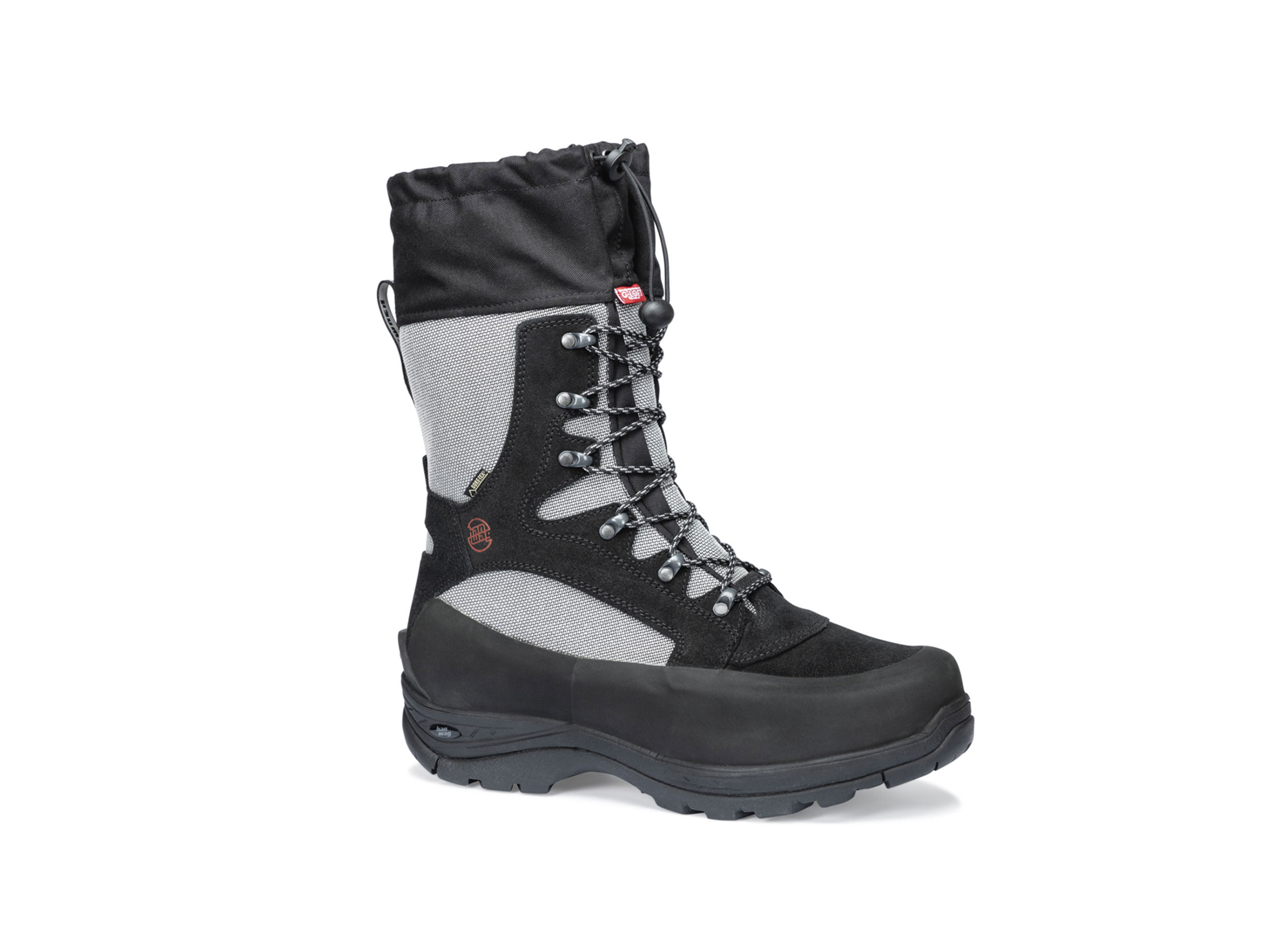
Our boots for extremely cold conditions
The HANWAG Abisko GTX will let you venture confidently into wintery northern landscapes. It’s waterproof and keeps feet warm in temperatures down to minus 49 degrees thanks to its G-Loft Fit insulation. An expedition-ready winter boot for extreme temperatures, custom-developed for the Fjällräven Polar Experience. HANWAG’s warmest shoes for cold feet. Off you go into the cold!

"The outsoles on boots for hiking in winter have a particularly distinct tread with prominent studs and lugs."
Bettina Haag, R&D designer at HANWAGHiking in winter requires extra-good grip
“The outsoles on boots for hiking in winter have a particularly distinct tread with prominent studs and lugs that dig into the snow.” explains Bettina. Sometimes extra fibreglass or mineral particles are added to the rubber on the sole, which (like tiny spikes) improve traction when hiking in snow and on ice. The rubber compound should also be modified to cope with the cold temperatures and not harden.
The characteristics of a sole also affect the midsole. It tends to be on the stiffer side in boots for snowy hikes or snowshoe trails. Because on snow-covered ground, a sturdy sole helps with shifting body weight and taking precise steps.
The right size and fit in winter boots
It’s very important not to buy winter boots that are too small. Because if the boots are too snug (or laced too tightly), circulation in the feet is poorer and they get cold more quickly. Which is why you should buy winter hiking boots half or a whole size bigger.
For feet to have enough space at the sides, winter hiking boots are fashioned with a wider last. However, you shouldn’t have too much space at the sides. Because boots that are too wide make it difficult to dig the soles into the snow or stabilise snowshoes.
Watch the video: How to find the right shoe size (English subtitles available)
-
Why do feet get cold so quickly?
Temperature fluctuations at the extremities are nothing unusual. The human body runs like a thermostat. When outside temperatures drop, blood vessels in the extremities constrict to keep the brain and vital organs in the centre of the body at an ideal temperature. At the same time, the temperature in the feet and hands drops.
If your feet are always cold, this can also be due to health problems, such as heart failure, diabetes, or the results of heavy smoking. All these factors mean poor circulation.
And women have cold feet much more frequently than men. This is because muscles are crucial for producing body heat. While muscles account for an average of 40 percent of body mass in men, it’s just 23 percent for women. Hormones also play a role: oestrogen and thyroid hormones mean that the metabolic rate in women is lower.
-
What are the main cold feet causes?
Two factors are the main causes of cold feet, so prevent these from occurring and stop those cold toes.
- A lack of exercise: the less you move, the faster your body temperature falls. Hunters sitting around in winter know all about that problem. Which is why warm hunter winter boots with very good insulation are worth their weight in gold. Hunters swear by cold weather hunting boots and hunting winter gear. When you’re tired, bodily functions also shut down, and the likelihood of getting cold increases.
- Moisture: this makes you feel even colder. Just like it does when you sweat, perspiration cools the body down. Which is why it’s vital to keep feet as dry as possible. That’s not so easy when you’re hiking. This is because human feet secrete around 50 ml of sweat per hour. That’s a quarter of a litre during a five-hour tour. So it’s hardly surprising that socks and footwear get wet during a tour.
-
Cold feet treatment: How to deal with cold toes?
Here are a few tips that work fast when you’re on tour:
- Energetic movements such as hopping, running on the spot, swinging your legs or a few short sprints reactivate the body’s own heat pump.
- Foot massage: it’s best to take off your footwear and massage your feet in a warm place, in a hut or a tent. This also relieves tension, which hinders circulation.
- Hot drinks: hot soups or drinks also help when it’s cold. During hikes, a flask keeps soups or tea hot for a long time. Spices such as ginger, coriander, chilli, cumin, or cinnamon keep bodies hot from the inside. But leave any alcoholic drinks at home because alcohol makes blood vessels dilate and you lose body heat.
- Beware of frostbite: frostbite causes ice to form in the tissues. The first signs are a whitish discolouration of the skin and numbness. Severe frostbite is a serious problem. In the worst-case scenario, amputations might be necessary.
- Important: If you get really cold, warm up slowly in case of frostbite and hypothermia. You should never warm up the areas concerned by exposing them directly to very hot sources of heat (fire, stove, hairdryer etc). Don’t rub snow into frostbitten parts of the body. Don’t burst blisters caused by frostbite.
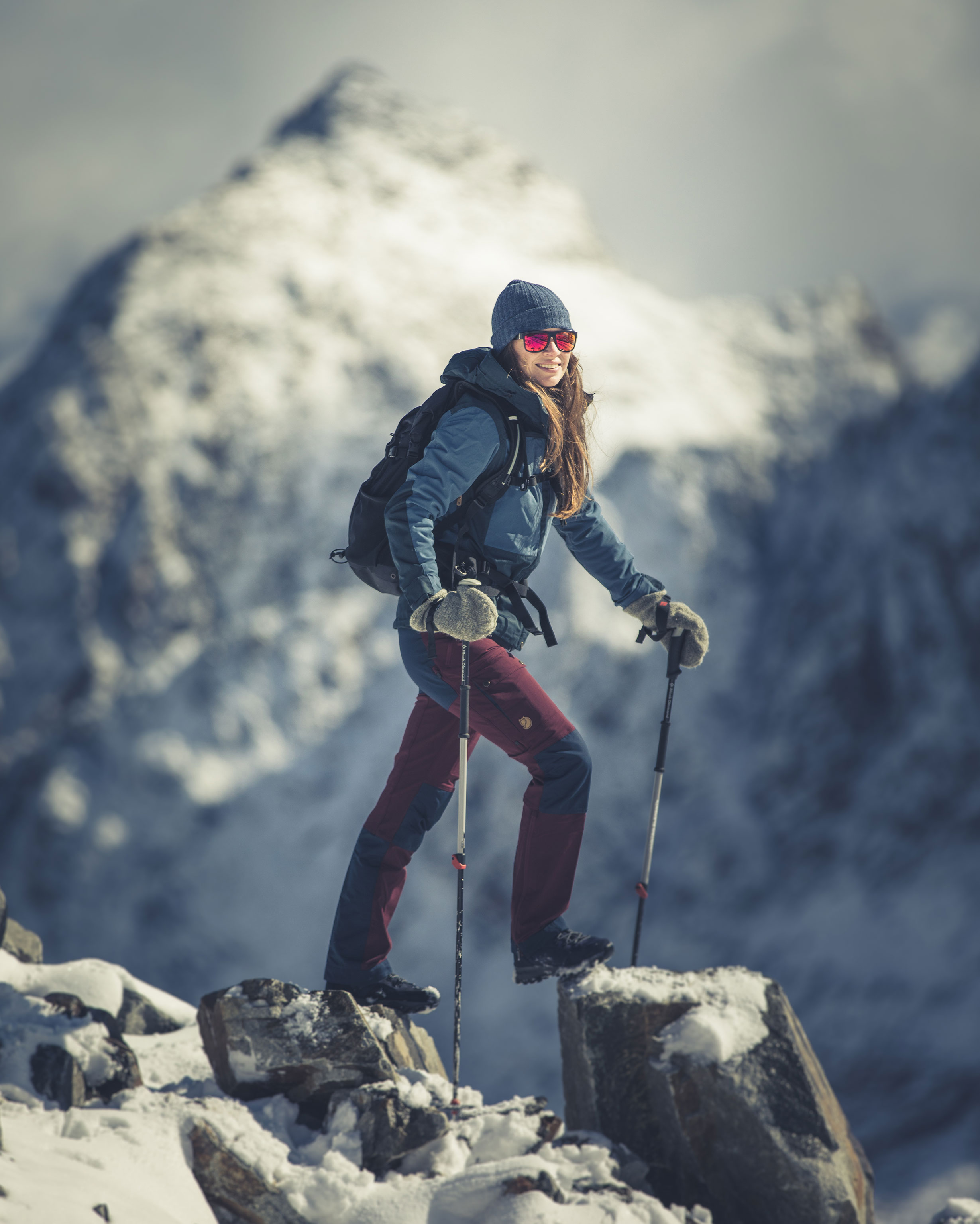

"In addition to footwear, socks also play a key role in keeping your feet warm."
Bettina Haag, R&D designer at HANWAG4. The right socks to prevent cold feet
“In addition to footwear, socks also play a key role in keeping your feet warm,” emphasises Bettina. They allow you to adjust and enhance the fit, moisture management and insulation of hiking boots.
Winter hiking socks with a blend of merino wool and synthetic fibres achieve the best results. The wool keeps wearers warm and (to a certain extent) work when it’s wet too. The synthetic fibres, in turn, help to wick moisture away from the foot to the outside.

Expertise and know-how for your outdoor adventures – welcome to the HANWAG BOOTCAMP. Watch the how-to videos on our YouTube channel.
5. More gear for winter hiking
Alongside good footwear and socks, these tips can also help to keep your feet dry and warm:
- Gaiters: these prevent snow and water from getting into boots, therefore keeping feet warm.
- Insulating footbeds: an additional thin insulating layer (for example with a reflective aluminium coating) under the footbed prevents the cold from creeping up and into your feet at low temperatures. Make sure that your boot has enough space to accommodate it. If your boots are too tight, circulation to the feet suffers and your feet will get cold. What’s more, the fit of the boot will deteriorate if it’s too tight. The heel might no longer fit perfectly and this could cause blisters.
- Boot heating: in very cold weather, a heated footbed keeps feet warm in winter.
- Skin-care products: before or after a tour, warming foot balm helps improve circulation.
Conclusion: With the right gear, you can drastically reduce the risk of cold feet.
Most of all, make sure that your shoes are properly insulated. We have models to suit any temperatures. You can then enjoy the outdoors and keep warm, even in winter.

